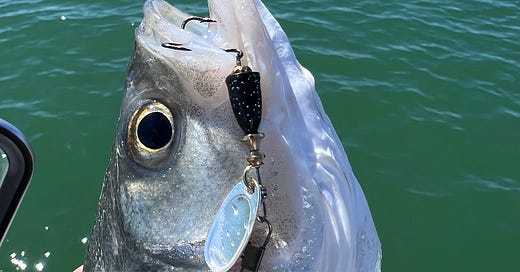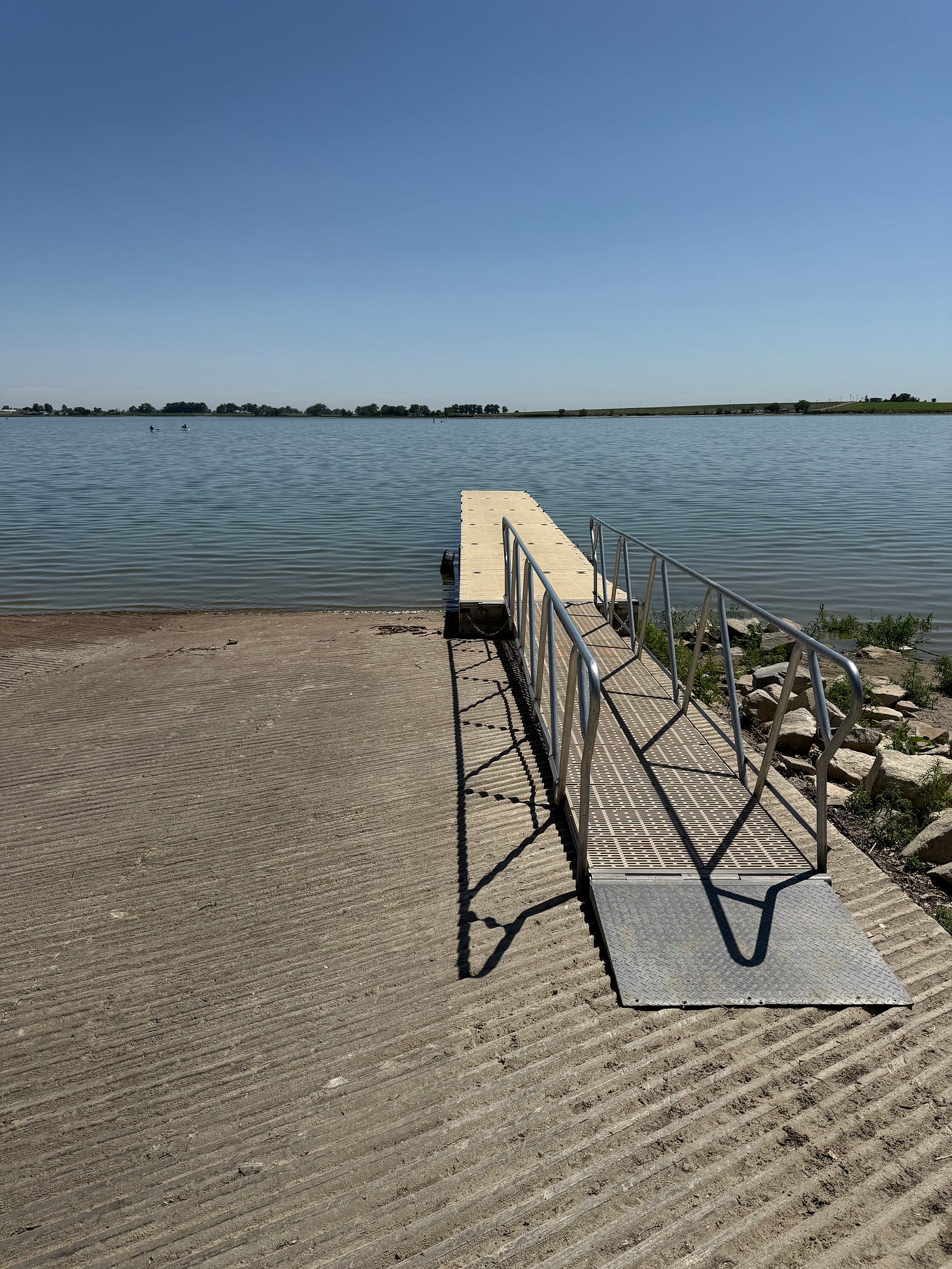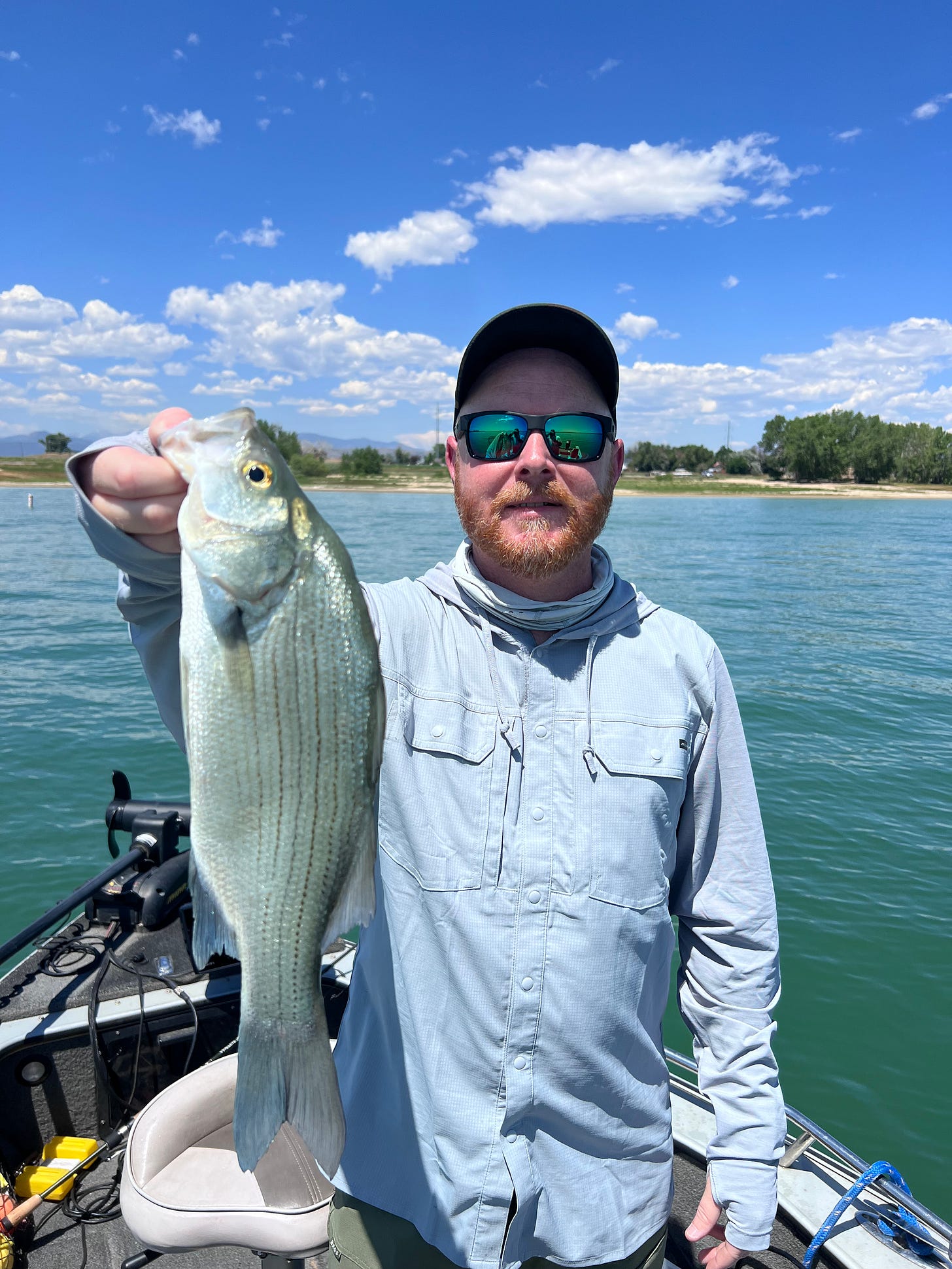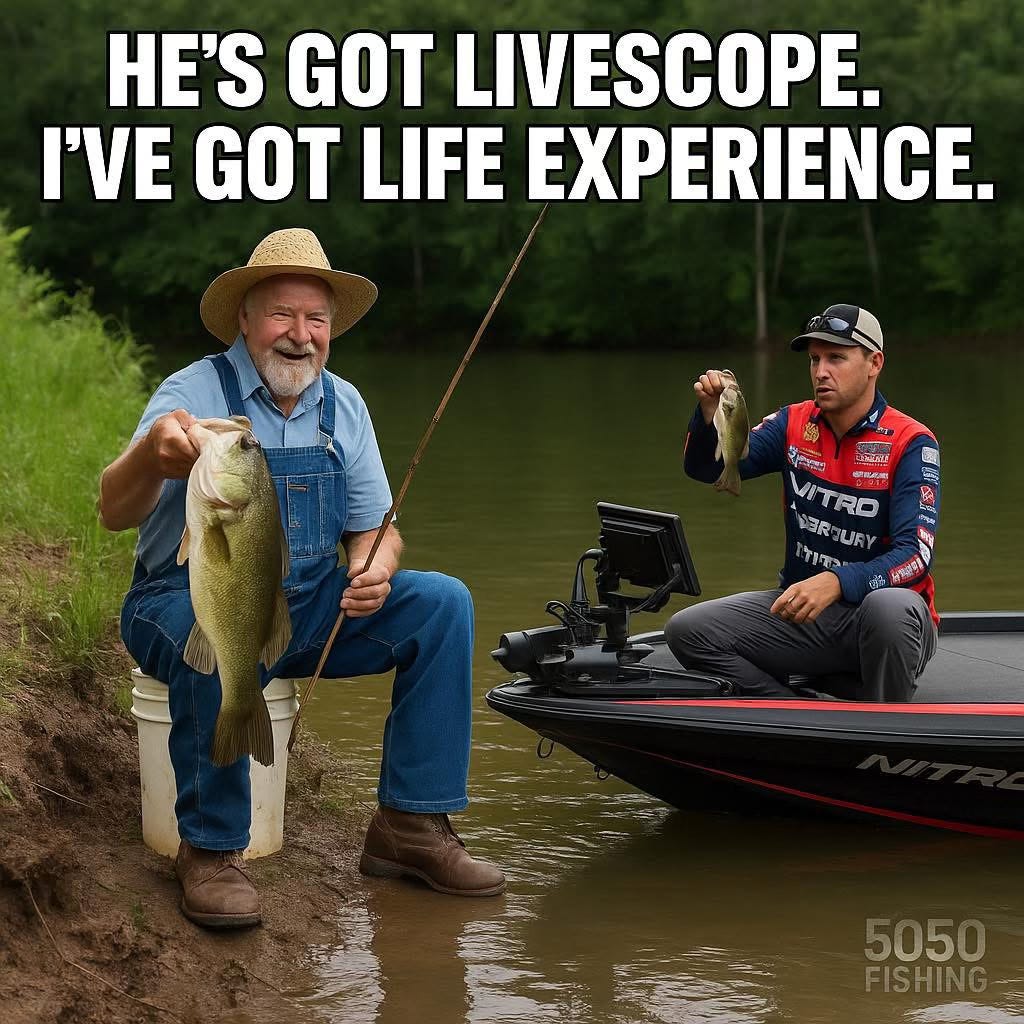Summer has decided it is coming out of hiding for the next few days, I’m already over this heat! The cooler, wet weather has been a blessing, allowing several of our lakes in NoCo to receive water that wasn’t expected to arrive in significant quantities this year.
The water level at Union has come up about 4 feet; it is still 6 feet below full pool. With the current water level, boats are able to launch, and the dock is out. The rangers have said the walleye bite is good for those running bottom bouncers and spinners.
Boyd has risen about 4.5 feet since June 9th, when the inlet turned on. The lake had been gaining about half a foot a day, but today it looks like the flow has decreased. The current drew white bass and walleyes into the marina cove, and they should remain in there for a few days after the current stops. This provided good opportunities for shore anglers and those who enjoy fly fishing for warm water species. I’d get out there in the next couple of days if you want to capitalize on this opportunity. Yesterday, I did notice my first white bass boils of the year out on the main lake. The fish were in the 9-11 inch range, but provided some fun action for about an hour.
HOT BITES
Chatfield - remains one of the hot spots. The bass bite is good along weeds and rocky areas using Ned rigs and weightless stick worms, don’t forget topwater around dawn and dusk. The walleye are being caught in the shallows around the weeds and on the deeper 15-25 foot structure. Livebait is still the key, jig head with worms or leeches, and bottom bouncers using crooked hooks and half a crawler.
Cherry Creek - the walleye bite remains good. Look to the shallows before the crowds hit the lake or at night. Once the recreational boating traffic gets bad, push out to the nearest structure in the 8-15 foot range for the best bite.
Boyd - White bass are starting to school up and chase shad; look for boils on the main lake. This can be some of the fastest action of the year.
Jackson - the walleye and wiper bites remain good. Look for fish in the deeper water east and northeast of the boat ramp. There are also fish moving towards the dam, and that area can be a good producer this time of year.
Horsetooth - the smallmouth fishing is the best it’s been all year. Bass are being caught in shallows along shade lines and on most structures, from the backs of coves to the main lake. Try jigs and paddletails, Ned rigs, and weightless stickworms. Don’t overlook topwater in the low-light periods.
Ponds - the water temperature is starting to push into the mid-70s in many of the area ponds. This leads to the morning and evening bite being the best. When fishing middle of the day, look for shade, weeds, or deeper water. The trout bite in the ponds has dropped off and will stay that way through the middle of September, so spend your time focusing on the warm water species.
BOYD LAKE STATE PARK ENTRANCE CHANGES
Starting this weekend, there will be a change to entering Boyd Lake State Park. In the past, when the park was at capacity or the entrance station got backed up, people would park along County Road 11C and down Boise Street, waiting to get into the park. Due to safety concerns, vehicles wanting to enter the park will no longer be allowed to park along either road, waiting to get into Boyd. Be prepared for this change; it will have the most impact after about 11 am on weekends and holidays.
CPW NEWS
Trout stockings:
Denver area - Aurora, Quincy
North Front Range - Pinewood
SUMMER NIGHT TRIPS FOR WALLEYES
The summer bite for larger nighttime walleyes gets rolling as the surface temps start hitting 70 degrees. Often, these night adventures can produce some of the largest walleyes of the year. Starting in July, I’ll be running night trips with added focus around the full moons in July, August, and September. If you want to get out on a trip to target these quality walleyes after dark, drop me a message.
FLP FISHING TIP - Fishing Boils
Boil Alert: Mastering the White Bass and Wiper Feeding Frenzy
There's nothing quite like the heart-pounding excitement of spotting a boil erupting on the water's surface – that telltale commotion of white bass or wipers herding baitfish into a feeding frenzy that looks like an underwater blender went haywire. But here's the thing about boil fishing: timing, preparation, and understanding the seasonal progression can make the difference between limits and disappointment
The Boil Timeline: Right now, in early season, you're typically seeing smaller white bass creating those first boils as they chase tiny shad and other small baitfish. These eager whites are hungry and aggressive, making them perfect targets for fast action. The real giants – those chunky white bass and hefty wipers – usually join the party a week or two later when the baitfish have grown larger and provide a more substantial meal. It's like the difference between appetizers and the main course.
Stay Ready, Stay Rigged: When fishing any lake with white bass or wipers, always keep a couple of rods pre-rigged and ready to fire. Boils can pop up anywhere, anytime, and they often disappear as quickly as they appeared. Having gear ready means the difference between capitalizing on the action and watching helplessly as fish scatter before you can tie on a lure.
Boil-Busting Arsenal: Keep it simple but effective. Trout spinners in size 2-4 are absolutely deadly – they cast well and imitate fleeing baitfish perfectly. I prefer the Blue Fox Vibrax as they are heavy for their compact size, allowing for longer casts to those distant boils. Small jigs tipped with twister tails or paddle tails work magic, especially in white or shad colors. (Look at the 1/8 and 1/4 oz Moon Eye jigs and 2.5-3 inch CrushCity Mayor). Don't overlook topwater presentations when fish are actively surface feeding – small poppers or walking baits can trigger explosive strikes. Smaller jerkbaits that mimic injured baitfish are also gold.
The Golden Rule of Boil Fishing: Always cast past or in front of the boil, never directly into the middle of it. These feeding schools are constantly moving, and by the time you see the surface disturbance, the fish have already moved on. Lead them like you're shooting ducks – anticipate where they're headed and put your lure in the strike zone.
Pro Tips:
Keep your eyes on the birds. Diving gulls and terns are your best boil spotters – they'll lead you to the action faster than any fish finder ever could.
Keep your presentation in the top foot to 18 inches of the water column. These fish are feeding up and won’t chase baits below them.
When the boils start popping, it's game time. Stay alert, stay ready, and remember – these feeding frenzies are nature's version of a free lunch, but only if you're prepared to take advantage of them.







